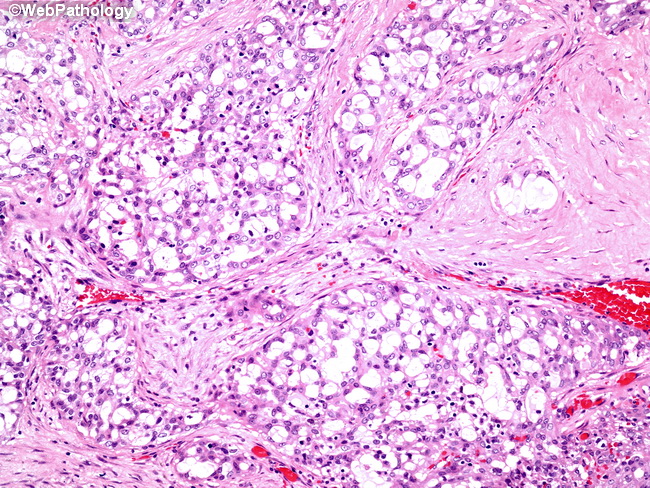Mammary Analogue Secretory Carcinoma


Comments:
Molecular Genetics: Most cases of mammary analogue secretory carcinoma ( MASC) carry a translocation t(12;15)(p13;q25) resulting in ETV6-NTRK3 gene fusion. This genetic rearrangement is not specific to secretory carcinomas of breast and salivary gland, but has also been observed in congenital fibrosarcoma, cellular mesoblastic nephroma, and in some cases of acute myeloid leukemia. In a subset of MASC cases, the ETV6 is rearranged on FISH but ETV6-NTRK3 fusion transcript is not detectable by RT-PCR, suggesting heterogenous breakpoints or another partner gene. Differential Diagnosis: The differential diagnosis of MASC includes zymogen-poor acinic cell carcinoma (ACC), low-grade salivary duct carcinoma, cystadenocarcinoma, and low-grade adenocarcinoma, NOS. Among these, the most challenging entity to distinguish from MASC is the zymogen-poor ACC. The presence of DOG-1 positivity and the absence of ETV6-NTRK3 fusion support the diagnosis of zymogen-poor ACC.



